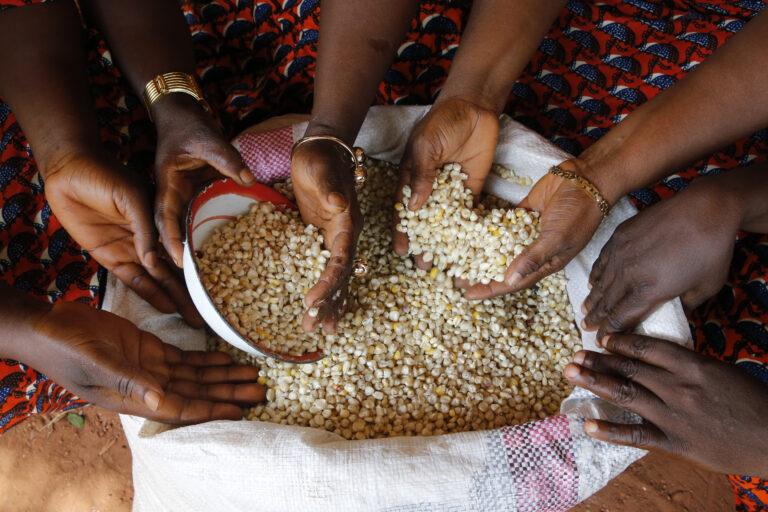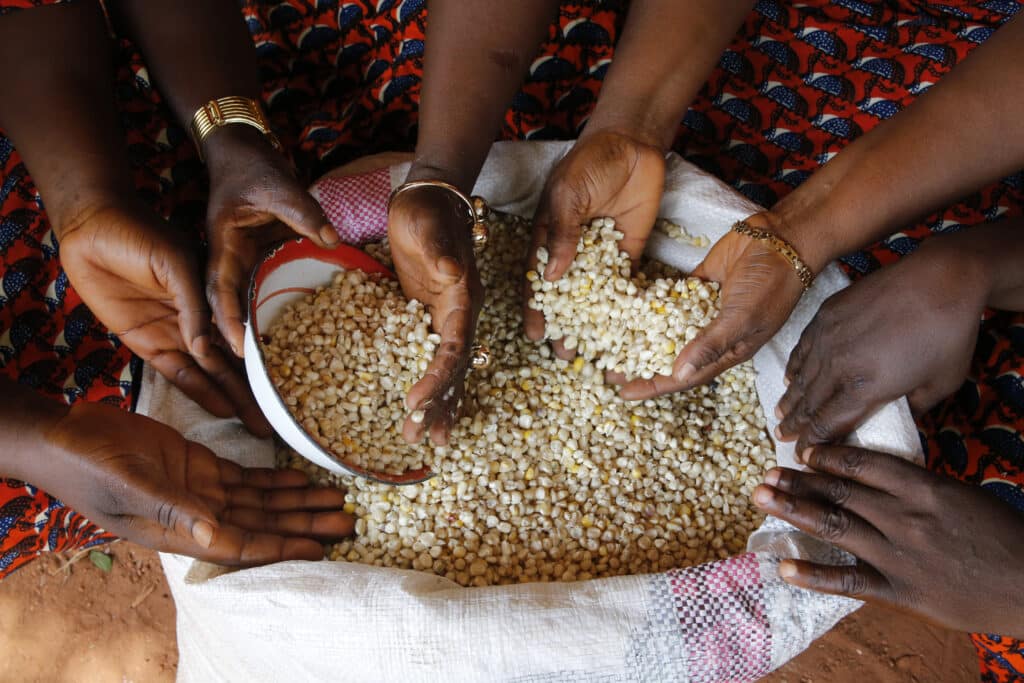As part of our celebration of traditional foods, Remitly is diving deep into the rich culinary history of our customers.
Today, we’re unveiling the secrets of one of West Africa’s iconic dishes: Pâte de Maïs, or Wô, the national dish of Benin. From its classic ingredients to its agricultural roots and historical context, read on for more about this Beninese staple.
A Brief History of Benin
Before delving into the dish itself, it’s crucial to understand the cultural and historical landscape that gave rise to it. Benin, located in West Africa, has a rich history dating back to ancient kingdoms, including the Dahomey kingdom, and French colonization. Today, it is a melting pot of various ethnic groups, including the Fon and Fulani, among others.
What is Pâte de Maïs?
Pâte de Maïs is a starchy side dish that is commonly consumed in Benin and other countries in West Africa like Togo, Nigeria, and Ghana.
Reminiscent of fufu in other African countries and couscous in texture, it is usually served alongside proteins and vegetables. Created through a unique process that includes fermentation, research published in the International Journal of Microbiology suggests that this dish is abundant in lactic acid bacteria, adding a healthy twist to its delectable taste.
Classic Ingredients
Corn is the primary ingredient in Pâte de Maïs, a cereal integral to African food consumption.
Depending on regional preferences, millet or sorghum may also be used. Sometimes manioc (cassava) is incorporated, a root vegetable that is also a significant part of the diet in Benin and other West African nations. Water and lipids, like oil or fat, are blended into the dish to give it a particular texture. Fermentation is a key aspect of the dish that elevates its flavor and extends its shelf life.
Agriculture and Food in Benin
Agriculture is a cornerstone of Benin’s economy and plays a vital role in its development. It is the primary source of income for small farmers and a foundational element for food products, including cereals like corn and other staples like cassava and plantain.
The Food and Agriculture Organization (FAO) notes that the sector has adopted technology to enhance production and efficiency. Whether it’s corn, manioc, or sorghum, these staples often feature prominently in Benin’s street food markets and dining tables.
Other Names and Variations
While Pâte de Maïs is the most commonly used name, the dish has various monikers in local languages. For example, it might be called Wô, “Aklu” or “Akassa” in the Fon language, although these names can sometimes refer to different but similar types of dishes depending on the region. The Fon are one of the major ethnic groups in Benin, and their language, also known as Fon, is widely spoken.
The dish has similar versions in neighboring West African countries like Burkina Faso and Ghana, where the local diet also includes starchy foods.
Traditional Pâte de Maïs Recipe
Ingredients:
- 2 cups of maize flour
- 4 cups of water
- A pinch of salt
- 1 tablespoon of oil (optional)
Method:
- Bring 3 cups of water to a boil.
- In a separate bowl, mix the maize flour with the remaining cup of cold water.
- Slowly add the flour mixture to the boiling water while stirring continuously to avoid lumps.
- Add salt and continue to cook on low heat until the mixture thickens.
- Optional: Add oil for extra texture.
- Allow to cool before serving.
Learning More about Food in Benin
Exploring the cuisine of Benin goes beyond just one dish. The country offers a diverse range of flavors, ingredients, and cooking techniques that reflect its cultural heritage and geographical location. From street food to traditional dishes, here are some highlights of Beninese cuisine:
- Street Food: Benin’s bustling markets are a treasure trove of street food delights. One popular street food is “kuli-kuli,” a deep-fried snack made from ground peanuts and spices. It is crispy and flavorful, often enjoyed on its own or used as a garnish for other dishes. Another street food favorite is “akara,” which are bean fritters made from black-eyed peas or cowpeas. They are deep-fried to perfection and served with spicy sauces.
- Fon Cuisine: The Fon people, one of the largest ethnic groups in Benin, have a distinct culinary tradition. Their cuisine is characterized by the use of local ingredients such as palm oil, yams, and seafood. One iconic Fon dish is “gbofloto,” which are deep-fried yam balls. These crispy and savory snacks are often enjoyed with a side of spicy tomato sauce.
- Seafood Delights: Given its coastal location, Benin has a rich seafood culture. Fish, shrimp, and crab are commonly used in various dishes. “Aklui,” for example, is a popular fish stew made with tomatoes, onions, and spices. The fish is simmered in this flavorful sauce until tender and served with a side of pâte de maïs or rice.
- Influences from Neighboring Countries: Benin’s cuisine is also influenced by its neighboring countries. For instance, the influence of Nigerian cuisine can be seen in dishes like “egusi soup,” a thick and hearty soup made with ground melon seeds, vegetables, and meat. It is often served with pounded yam or eba, a fermented cassava dough.
Exploring the cuisine of Benin is a journey that unveils the country’s history, cultural diversity, and agricultural practices. From street food to traditional dishes, each bite tells a story and offers a glimpse into the vibrant culinary traditions of this West African nation.
Visit the homepage, download our app, or check out our Help Center to get started.

